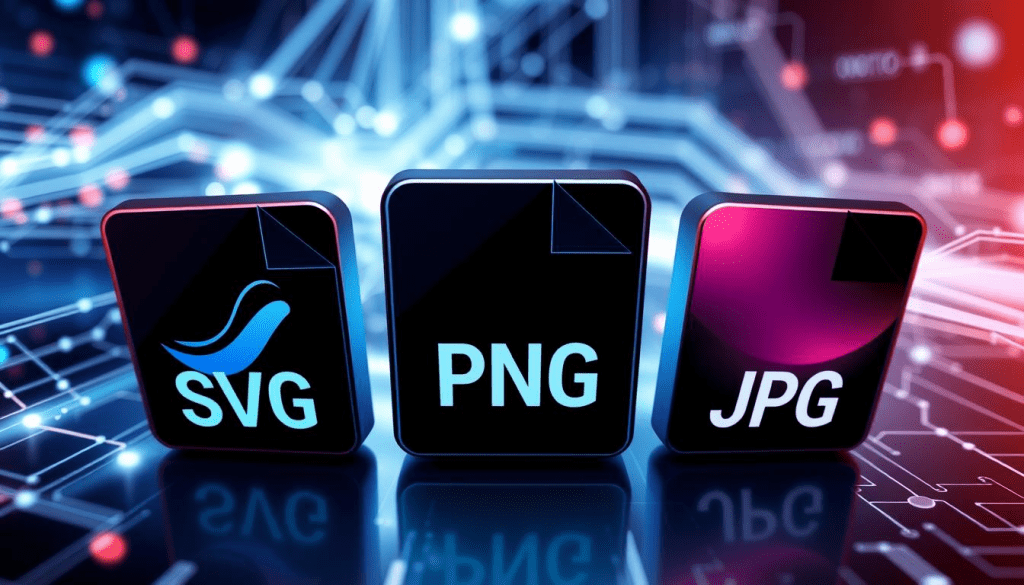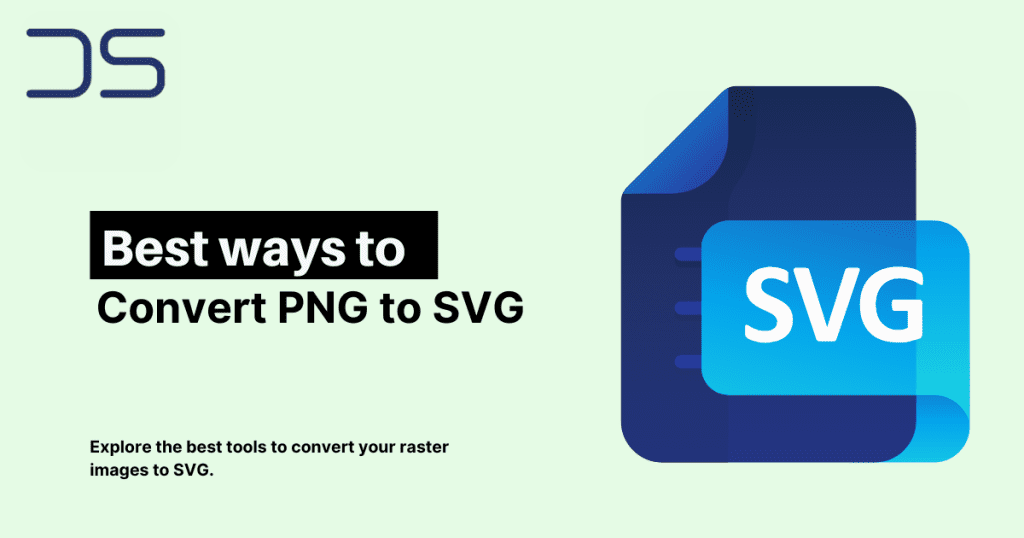In today’s digital world, picking the right file format is key. It affects your images’ quality, size, and how well they work. Each format, like vector graphics and raster images, has its own strengths and uses. This article will help you understand the differences between SVG, PNG, and JPG. You’ll learn when to use each, making your visuals better for the web and print.
Key Takeaways
- SVG files are scalable vector graphics that maintain high quality at any size, making them ideal for logos, icons, and illustrations.
- PNG format offers superior transparency and color depth, making it a go-to choice for images with transparent backgrounds or intricate color palettes.
- JPG files excel at compressing photographic images, making them a suitable option for high-resolution photos and digital art with complex color schemes.
- Selecting the right file format can significantly impact the size, quality, and performance of your digital assets, so it’s crucial to understand the strengths and limitations of each.
- Optimizing your visual assets for the web and print applications often requires a strategic approach, balancing file size, image quality, and the specific needs of your project.
Introduction to Digital Image File Formats
In today’s digital world, digital imaging has grown a lot. We now have many file formats for different needs. From simple graphics to advanced web graphics, the way we handle file compatibility and image quality has changed a lot.
The Evolution of Digital Image Standards
The history of digital image formats started in the 1980s. The Computer Graphics Metafile (CGM) and Tagged Image File Format (TIFF) were early leaders. They paved the way for formats like the Graphic Interchange Format (GIF) and the Joint Photographic Experts Group (JPEG). Each has its own special uses.
Why File Format Selection Matters
Choosing the right digital image file format is key. It affects image quality, file size, and file compatibility on different devices. The right format can make an image look sharp and clear, or slow to load.
| File Format | Image Quality | File Size | Compatibility |
|---|---|---|---|
| SVG | Excellent | Small | High |
| PNG | Excellent | Medium | High |
| JPEG | Good | Small | High |
Knowing what each file format can do is important. It helps make sure images are the best they can be for their use. This is true for the web, print, or any other digital imaging need.
What Makes SVG Files Unique
Scalable vector graphics (SVG) are special in the world of digital images. They differ from formats like JPG and PNG because they are resolution-independent and XML-based. This makes them great for web design and more.
SVGs are made of vectors, not pixels. This means they can grow or shrink without losing quality. They’re perfect for websites that need to look good on all devices.
- Vector-based format for resolution independence
- XML-based structure for flexible manipulation
- Smaller file sizes compared to raster images
- Support for interactivity and animations
The XML-based structure of SVG makes it easy to work with. You can edit, mix, and change SVGs easily. This makes them great for many web projects, from icons to complex charts.
“SVG is a game-changer for web designers and developers, offering unparalleled flexibility and control over image assets.”
Even though SVGs aren’t for every image, they’re very useful. Knowing when to use them can help web experts create amazing, interactive websites.
The Power and Versatility of PNG Format
The Portable Network Graphics (PNG) file format is great for many web graphics. It’s used for logos, illustrations, screenshots, and product images. PNG stands out because it supports lossless compression and alpha transparency. This makes it perfect for images that need to look sharp and blend well with their backgrounds.
Transparency and Color Depth in PNG
PNG is known for its ability to keep transparency. This is great for graphics with detailed shapes and clean edges. Unlike JPEG, PNG doesn’t lose quality because it uses lossless compression. This is why PNG is best for web graphics, logo design, and more where transparency matters.
PNG also has better color depth than most image formats. It supports up to 48-bit color and 16-bit grayscale. This means PNG files can show a wide range of colors and shades, keeping your images looking vibrant and detailed.
When to Choose PNG Over Other Formats
PNG is a top choice for many reasons. It’s perfect for web graphics with transparent backgrounds, like icons and logos. It’s also great for images with text or sharp contrasts, where JPEG’s compression can cause problems.
Size Considerations for PNG Files
Even though PNG keeps image quality high, it can make files bigger. This is especially true for photos and complex images. To make PNG files smaller without losing quality, try lossless compression and reduce color depth. This way, you can make sure your images load quickly and look great.
JPEG Format: Compression and Usage
The JPEG (Joint Photographic Experts Group) format is key for digital photos and web images. It uses a lossy compression that keeps image quality high while making files smaller. This makes JPEG perfect for many uses.
JPEG is great because it balances image quality and file size well. You can adjust the compression to fit your needs. This makes JPEG a must-have for both pros and hobbyists in digital photography and web design.
For capturing stunning landscapes, portraits, or product shots, JPEG is the top choice. It’s used by most cameras and image software. Its wide use and compatibility have made JPEG a leader in digital images. Knowing how to use JPEG can help you make amazing content for websites, presentations, and archives.
FAQ
What is the difference between SVG, PNG, and JPG file formats?
SVG is a vector format that keeps its quality when scaled. PNG is a lossless format that supports transparency. JPG is a lossy format used for photos and web images.
When should I use SVG, PNG, or JPG?
Use SVG for scalable images like logos and icons. PNG is great for images with transparency, like graphics and screenshots. JPG is best for photos and images where size matters.
What are the advantages of using SVG files?
SVG files maintain quality when scaled. They are XML-based, making them lightweight and easy to edit. They’re perfect for responsive web design and animations.
What are the key features of PNG format?
PNG supports transparency, making it ideal for logos and graphics. It also offers high color depth for accurate color representation.
When should I use JPG files?
JPG is great for photos and web images because it’s small in size. It’s perfect for images with complex colors, like photos.
How can I optimize the file size of PNG and JPG images?
For PNG, adjust color depth and use lossless tools. For JPG, try different compression levels to balance quality and size.



